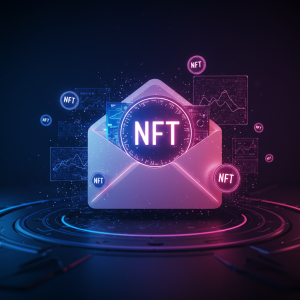Crypto and NFT Marketing: A Complete Guide

The digital asset landscape has evolved dramatically over the past few years. What started as niche communities discussing blockchain technology has transformed into a multi-billion dollar industry that attracts mainstream attention. Yet marketing crypto and NFT projects remains one of the most challenging aspects of this space.
This comprehensive guide will walk you through the essential strategies, platforms, and tactics needed to successfully market crypto and NFT projects. You’ll learn how to navigate regulatory constraints, build genuine communities, and create campaigns that drive real engagement and adoption.
Understanding the Crypto Marketing Landscape

The Unique Challenges of Crypto Marketing
Marketing digital assets isn’t like promoting traditional products or services. The crypto space operates under strict regulatory scrutiny, with advertising restrictions across major platforms like Google, Facebook, and Twitter. These limitations force marketers to think creatively about reaching their target audience.
The volatility of cryptocurrency markets also means that marketing messages must be carefully crafted. One day your project might be riding high on positive sentiment, and the next day market conditions could shift dramatically. This unpredictability requires agile marketing strategies that can adapt quickly.
Trust remains another significant hurdle. High-profile scams and project failures have made potential investors and users extremely cautious. Your marketing efforts must prioritize transparency and credibility above flashy promises or unrealistic claims.
The Evolution of NFT Marketing
NFTs present their own unique marketing challenges. Unlike cryptocurrencies, which often serve functional purposes, NFTs derive value from scarcity, artistic merit, or utility within specific ecosystems. This means NFT marketing must focus heavily on storytelling and community building.
The NFT market has also matured significantly. Early projects could succeed with simple profile picture collections, but today’s successful NFT ventures require clear utility, strong brand identity, and ongoing value creation for holders.
Building Your Crypto Marketing Strategy
Define Your Target Audience
Successful crypto marketing begins with understanding exactly who you’re trying to reach. The crypto community isn’t monolithic—it includes day traders, long-term investors, technology enthusiasts, artists, gamers, and mainstream users just entering the space.
Create detailed buyer personas for each segment you want to target. A DeFi protocol might focus on experienced traders seeking yield opportunities, while a gaming NFT project might target casual gamers interested in earning while playing.
Consider the technical knowledge level of your audience. Are you speaking to crypto veterans who understand complex tokenomics, or newcomers who need basic education about blockchain technology? Your messaging strategy should align with their experience level.
Develop Your Value Proposition
Your value proposition must clearly articulate what makes your project unique and why someone should care. This goes beyond technical specifications to address real user needs and pain points.
Strong crypto projects solve genuine problems. Whether you’re creating a more efficient payment system, a new way to fund creative projects, or a gaming experience that gives players true ownership, your marketing should emphasize these practical benefits.
Avoid jargon-heavy explanations that only insiders can understand. Instead, focus on outcomes and benefits that matter to your target audience. How will your project improve their lives, make them money, or provide entertainment value?
Platform-Specific Marketing Strategies

Social Media Marketing
Twitter remains the primary social platform for crypto marketing. The platform’s real-time nature aligns perfectly with the fast-moving crypto markets, and many key influencers and thought leaders are active users.
Build a consistent posting schedule that mixes project updates, industry insights, and community engagement. Share behind-the-scenes content from your development process, respond to user questions, and participate in relevant conversations.
Discord has become essential for community building, particularly for NFT projects. Create dedicated channels for different topics, host regular AMA sessions, and foster genuine connections between community members. The goal is to build a space where people want to spend time, not just receive updates.
Instagram and TikTok offer opportunities to reach younger demographics through visual storytelling. Short-form video content explaining complex concepts in simple terms can be particularly effective for educational marketing.
Content Marketing
Educational content performs exceptionally well in the crypto space. Many potential users want to learn about blockchain technology, but they’re intimidated by the complexity. Create blog posts, videos, and infographics that break down complex topics into digestible pieces.
Tutorial content also drives engagement and builds trust. Show users how to interact with your protocol, mint NFTs, or participate in governance decisions. Step-by-step guides with screenshots can significantly reduce barriers to entry.
Thought leadership content positions your team as experts in the space. Share insights about market trends, technological developments, and the future of your particular niche. This type of content attracts organic traffic and establishes credibility.
Influencer Partnerships
Crypto influencer marketing can be highly effective when done authentically. However, the space is full of paid promotions that feel disingenuous. Focus on building genuine relationships with influencers who align with your project’s values.
Look for influencers who have engaged audiences rather than just large follower counts. Micro-influencers with 10,000-50,000 followers often deliver better results than mega-influencers with millions of followers but lower engagement rates.
Consider long-term partnership arrangements rather than one-off promotional posts. When influencers become genuine advocates for your project, their endorsements carry much more weight with their audiences.
Community Building and Engagement
Creating Genuine Value
The most successful crypto and NFT projects build communities around shared interests and values, not just financial speculation. Create spaces where people can connect over common interests related to your project’s theme or utility.
Provide exclusive access, early information, or special perks to active community members. This might include early access to new features, exclusive NFT drops, or voting rights on project decisions.
Regular events like AMAs, virtual meetups, or gaming tournaments help maintain engagement between major project milestones. These events give community members reasons to stay active and invite friends to join.
Governance and Participation
Many crypto projects incorporate governance tokens that give holders voting rights on project decisions. This creates natural marketing opportunities as token holders become invested in the project’s success.
Transparent decision-making processes and regular updates on governance proposals help build trust and engagement. When community members feel their voices are heard, they’re more likely to become advocates for your project.
Consider implementing reward systems for active community participation. This might include token rewards for helpful forum posts, NFT airdrops for engaged Discord members, or special recognition for contributors.
Compliance and Regulatory Considerations
Understanding Advertising Restrictions
Major advertising platforms have strict policies regarding cryptocurrency and NFT marketing. Google Ads allows advertising from licensed exchanges and wallet providers but restricts most other crypto advertising. Facebook has similar restrictions, though they’ve relaxed some policies for established companies.
These restrictions force crypto marketers to focus on organic growth strategies and alternative advertising channels. While this can be challenging, it also levels the playing field since even well-funded projects can’t simply buy their way to success through traditional advertising.
Stay updated on platform policy changes, as these restrictions continue to evolve. What’s prohibited today might be allowed tomorrow, and vice versa.
Disclosure Requirements
Transparency is crucial in crypto marketing. Clearly disclose any partnerships, sponsorships, or financial relationships that might influence your content. This includes social media posts, blog articles, and video content.
Be honest about risks and avoid making unrealistic promises about returns or project success. Regulatory agencies are increasingly scrutinizing crypto marketing claims, and misleading marketing can result in serious legal consequences.
Measuring Success and ROI
Key Performance Indicators
Traditional marketing metrics like click-through rates and conversion rates remain important, but crypto marketing requires additional KPIs. Track metrics like wallet connections, token holder growth, and protocol TVL (Total Value Locked) for DeFi projects.
Community engagement metrics are particularly important. Monitor Discord activity, social media engagement rates, and the quality of community discussions. High engagement often correlates with project success better than vanity metrics like follower counts.
For NFT projects, track floor prices, trading volume, and holder retention rates. Projects with strong communities typically maintain higher floor prices and experience less volatility during market downturns.
Attribution Challenges
Crypto marketing attribution can be complex due to the pseudonymous nature of blockchain transactions. Users might discover your project through social media but interact with it through a different wallet or platform.
Use UTM parameters and tracking pixels where possible, but recognize that you’ll likely have incomplete attribution data. Focus on overall trends and patterns rather than precise attribution for every conversion.
Emerging Trends and Future Opportunities
Integration with Traditional Marketing
As crypto adoption grows, we’re seeing increased integration between crypto marketing and traditional marketing strategies. Brands are launching NFT collections, accepting cryptocurrency payments, and partnering with crypto companies.
This creates opportunities for crypto projects to reach mainstream audiences through traditional channels. However, it also means increased competition and the need for more sophisticated marketing strategies.
Utility-Focused Marketing
The crypto space is moving away from purely speculative projects toward those with clear utility and real-world applications. This shift requires marketing strategies that emphasize practical benefits over potential financial returns.
Focus on demonstrating how your project solves real problems or provides genuine value to users. This approach builds more sustainable communities and attracts users who are interested in long-term participation rather than quick profits.
Taking Your Crypto Marketing to the Next Level
Successful crypto and NFT marketing requires a combination of traditional marketing skills and deep understanding of the digital asset space. The regulatory constraints and technical complexity create challenges, but they also create opportunities for marketers who can navigate them effectively.
Focus on building genuine communities around shared values and interests. Prioritize transparency and education over hype and speculation. The projects that succeed long-term are those that provide real value to their users and maintain trust through consistent, honest communication.
Start by defining your target audience and value proposition clearly. Then build your marketing strategy around the platforms and channels where your audience is most active. Remember that crypto marketing is a marathon, not a sprint—sustainable growth comes from consistent effort and genuine community building.
The crypto and NFT space will continue evolving rapidly, but the fundamental principles of good marketing remain constant: know your audience, provide value, build trust, and measure your results. Master these basics, and you’ll be well-positioned to succeed regardless of how the market develops.
Meta data
Meta title
Crypto and NFT Marketing Guide: Strategies That Actually Work
Meta description
Learn proven crypto and NFT marketing strategies for 2024. Build communities, navigate regulations, and grow your project with this complete guide.





